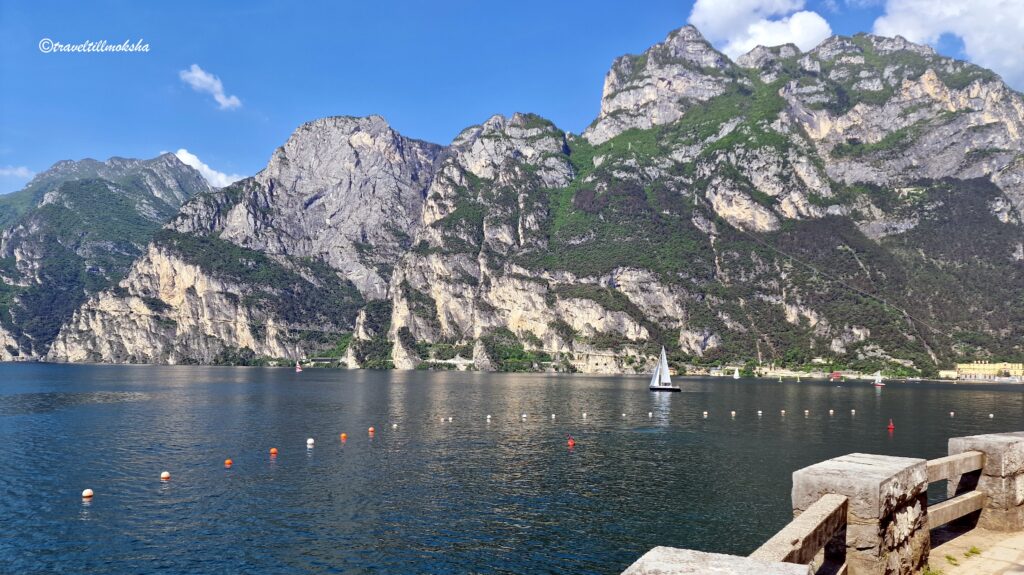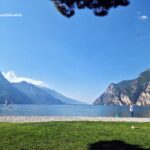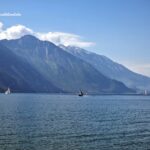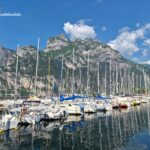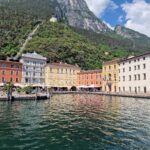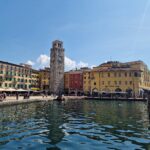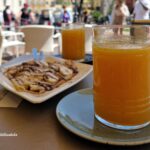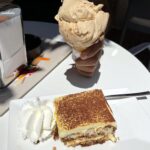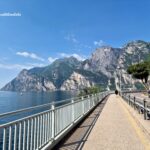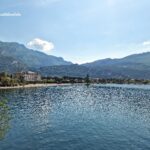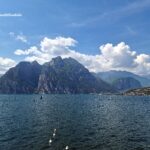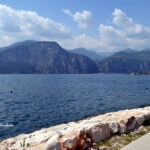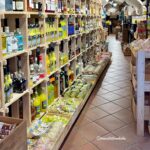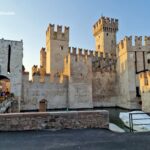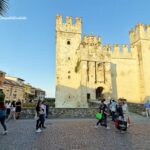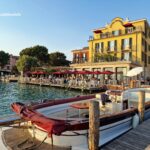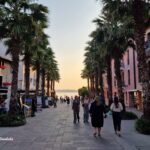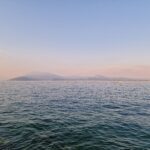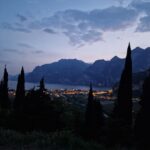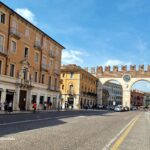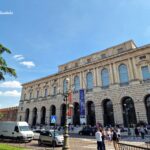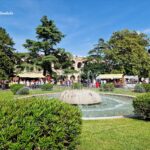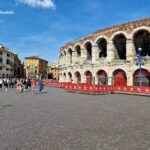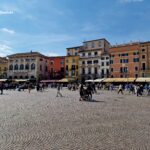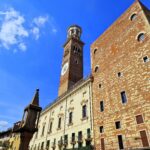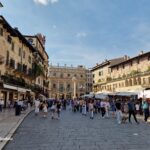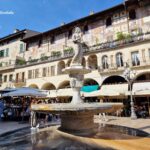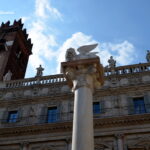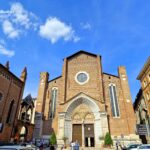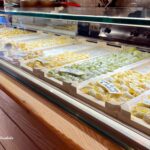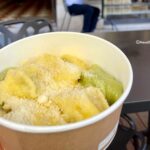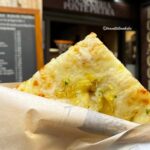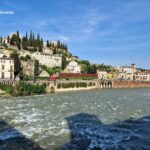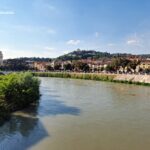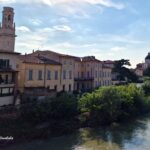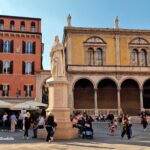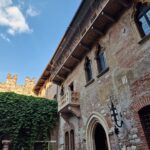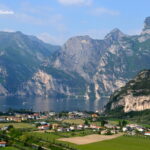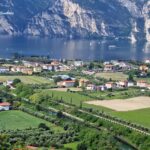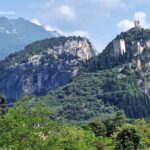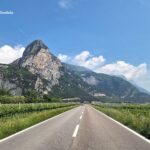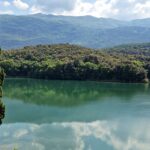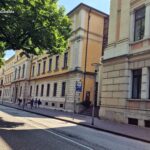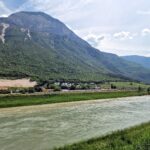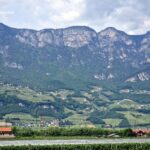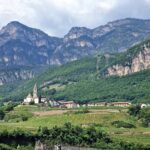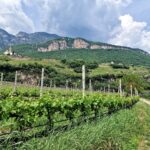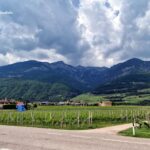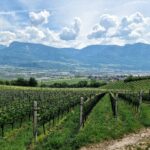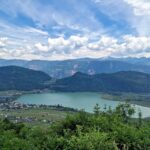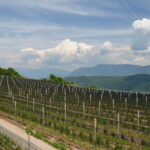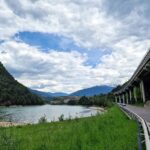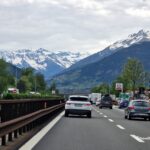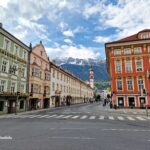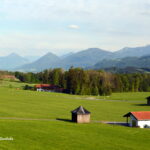Itinerary Summary:
Travel Time: May 2024 (v. good time – check avg. conditions by month here)
Day 0: Drive from Germany to Riva del Garda
Day 1: Lago di Garda with focus on Riva del Garda and Sirmeone
Day 2: Verona
Day 3: Drive back from Riva del Garda through the Weinstrasse or Strada del Vino
Hotel Apartment: Desireè Residence Riva del Garda
Travel Tip: Select avoid motorways and toll roads on Google Maps for scenic routes
Distance travelled: ~1400km by car and ~18km of walking
Day 0:
Having lived in Germany for many years, we had been recommended by numerous friends and colleagues to visit Lake Garda and its surrounding areas. However, we had kept putting it off in pursuit of more distant adventures – a perfect example of the Hindi idiom, “ghar ki murgi, daal barabar”!
A long weekend, combined with forecasts for poor weather in Germany versus sunny weather in North Italy in May 2024 changed that. We made a spontaneous plan to undertake a three-day road trip and started off on a cool Friday evening, with an aim to reach the picturesque town of Riva del Garda, nestled at the northern tip of Lake Garda, before midnight. We managed to traverse the almost 600km journey through Bavaria in Germany, Tyrol in Austria, before finally reaching our destination in the region of Südtirol or Trentino-Alto Adige within six hours (well before midnight), giving us some extra time for a much-needed slumber!
Day 1:
Our plan for our first day was to explore the area around Lago di Garda as much as we could, including walking at least 10,000 steps along the lakefront.
1) Forte Garda: Keeping our target in mind, we started our morning by heading to Forte Garda, a 20th century Austro-Hungarian fort offering stunning views of the lake. The walk along the lakefront was breathtaking, with each turn revealing new vistas of crystal-clear waters and the surrounding Garda Mountains, the last vestiges of the Dolomites and the Italian Alps.
2) Riva del Garda Waterfront: Strolling back along the lake, we passed the Pini Beach, a serene spot perfect for a leisurely walk or a dip in the lake. Next came the Specchio Acquatico and Spiaggia Sabbioni, which were filled with morning joggers and families lazing in the sun. We continued past Magnone and stopped at the Point View for panoramic views of the lake and the range of outdoor activities being undertaken on it, from windsurfing to standup paddleboarding.
3) Riva Old Town: Beyond the leisurely beaches and parks of the Riva waterfront, lay the Riva Old Town, dominated by the 13th century clocktower of Torre Apponale in the Piazza III Novembre and the Rocca di Riva fortress from the 14th century. These poignant reminders of the region’s rich history, stood in contrast to the bustling Vecchio Porto di Riva del Garda and Piazza Cantena. We enjoyed the lively atmosphere before making our way back through the charming streets of the old town.
4) Torbole: After a brief rest, we walked to the neighbouring town of Torbole, taking in the sights along the Spiaggia di Torbole. With the sun climbing to its zenith, we made short of our visit to this colourful habitation and retraced our steps to our hotel.
5) Lake Garda’s Eastern Coast: The Lago di Garda to put it mildly is a cross between a lake and a small sea, extending for more than 50kms in length and 16km in breadth at its widest point. The numerous towns and villages located along its banks are spread across the three provinces of Trento, Verona, and Brescia. Having taken a good amount of rest, we embarked on a scenic drive along the eastern shore of Lake Garda, following the SS249 and SR249 roads – for those who prefer an eco-friendlier way of travelling, there is also a cycling/ walking path along the shore, between the beaches and the main road, that traverses at least the eastern flank of the lake. Each town/ village we passed – Torbole, Navene, Campagnola, Malcesine, Assenza, Brenzone, Castelleto, Pai, Punta San Vigilio, Garda, Bardolino, and Lazise, was unique in its own way, but with shared architectural features like a dominant medieval fort or colourful buildings. Of all the towns we saw, we found Navene with its stunning views of the mountains against the lake, Malcesine, with its medieval castle perched on the edge of the lake, and Assenza with its views of the idyllic Isola del Trimelone islet, to be particularly captivating.
6) Sirmione: We reached the town of Sirmione, located in the province of Brescia, after a nearly two-hour long drive, just in time to explore the Castello Scaligero di Sirmione. This 14th century old town, surrounded by the fortress walls, was a maze of narrow streets filled with charming shops and cafes. After soaking in the vibe of the town and enjoying some moments looking out at the sun setting over the lake at the Spiaggia del prete beach, we drove back via the A22 Autostrada, concluding our first day with a relaxing evening back in our hotel apartment.
Food haunts of the day: Self-made breakfast at Desireè Residence Riva del Garda, and Lunch of Mozzarella and Tomato Panini and Nutella and Banana Crêpe at Bar Cristallo (good) and Salted Caramel Gelato and Tiramisu at Bar Gelateria Flora Downtown (insanely good), both in Riva del Garda.
Day 2:
For our second day’s outing, we had two options, in mind, either to head out along the western shore of Lake Garda back to Sirmione, or to head off to a more “classical” Italian town nearby. As we had woken up late and the sun was already beating down on us, we decided to opt for the latter and set off for the romantic city and UNESCO World Heritage Site of Verona.
1) Piazza Brà: Driving in from Riva, we drove past Porto Nuova, one of the four key gates of the city, and along the tree lined Corso Porta Nuova Avenue, before finding a good parking space near the Piazza Citadella. Walking under the arched gateways of the I Portoni della Bra, we entered Piazza Brà, where the imposing Arena di Verona dominated the square. This ancient Roman amphitheatre from 30 AD is the third largest of its kind in Italy, and its active use as a venue for music festivals is a testament to Italy’s efforts towards restoring and maintaining its historical monuments. Unfortunately for us though, it was cordoned off for renovations when we visited.
2) Piazza delle Erbe: Turning off from the Verona Arena, we took the Via Giuseppe Mazzini. This narrow pedestrian alleyway was lined with all kinds of retail shops, from Gucci and Dolce & Gabbana to Signorvino. Arriving at a T-junction at Via Cappello, we chose to turn left and headed to the vibrant Piazza delle Erbe. This square has been a forum or public square since Roman times and is surrounded by historic buildings like the 84m tall Torre dei Lamberti Clock Tower, the beautifully restored 16th century Case Mazzanti, and the baroque style Palazzo Maffei. Traversing the length of the Piazza, we crossed lively market stalls, as well as key landmarks such as the Fontana Madonna Verona, a 14th century fountain made of red marble, and the Colonna di San Marco column that was topped by the Lion of St. Mark, a reminder of the Venetian influence on the city.
3) Ponte Pietra: Turning off at the northern end of the Piazza delle Erbe, we walked past the Gothic Basilica di Santa Anastasia, the largest church in the city, and through Via Ponte Pietra to the iconic Ponte Pietra bridge. We watched the reflections of some of the city’s iconic landmarks like the 19th century fortress of Castel San Pietro, the 16th century church of Parrocchia di San Giorgio in Braida, and the towers of the 11th century Duomo/ Cattedrale di Santa Maria Matricolare against the gushing waters of the Adige river.
4) Casa di Giulietta: Retracing our steps from the Ponte Pietra, we chose to pass by the Dante inspired Piazza dei Signori and the Piazza Francesco Viviani, named for the anti-Fascist Italian resistance hero, before taking the Via Cappello once again to the Casa di Giulietta. This 14th century house, supposed to be the abode of Juliet, the female protagonist of William Shakespeare‘s romantic tragedy Romeo and Juliet, is visited by thousands every year. We stood in queue amongst the hundreds vying for a shot of the iconic balcony where Juliet would secretly meet Romeo but couldn’t get ourselves to do the other touristy activities like penning down our names on the heavily autographed Juliet’s Wall or touch the breasts of Juliet’s Bronze statue.
5) Back to Riva del Garda: Having spent an exciting day exploring the sights, sounds, and tastes of Verona, we wanted to head back to Riva del Garda before sunset. Heading back from Casa di Giulietta, we once again walked through the Piazza Bra, admiring this time at the Palazzo Barbieri, the neoclassical town hall of Verona, before jumping into our car and driving back towards Riva del Garda. Journeying back along the Adige river, the landscapes gradually shifted from urban to rural, and towering mountains, rolling hills and vineyards started dominating the landscape versus the medieval structures of Verona. Turning off the A22 Autostrada near Rovereto Sud, we retook the winding roads that we had taken two days earlier with a heavy heart, as our hotel apartment and the end of our short weekend-getaway approached rapidly.
Food haunts of the day: Self-made breakfast at Desireè Residence Riva del Garda, Lunch of Tortellini bowls (mix of truffles, olives, spinach and cheese etc. in butter sauce topped with parmesan shavings) at La Bottega della Gina XXL Verona (amazing) and Focaccia con Patate e Rosmarino at Focacceria Ponte Pietra (v. good) in Verona.
Day 3:
Our final day once again began a little later than we had planned for, all thanks to a late-night walk along the lakefront to see the stars and the twinkling lights of the towns along the coast.
1) Nago: Heading out of our little neighbourhood in Riva, we joined the caravan of cars moving in the direction of the town of Torbole. Eking up the mountain, we reached a panoramic viewpoint near the town of Nago from where we could get a bird’s eye view of Lake Garda, the surrounding towns and mountains, and even the mouth of the Sarca river. We would have considered this to be a perfect start to our day had it not been for the “dark red” roads on Google Maps.
2) Sarca Valley: Seeing the chock-a-blocked road in front of us, we instead chose to make a detour and take the SR249 and SS45bis country roads along the Sarca River. This turned out to be a great decision as in addition to avoiding the heavy traffic, we found ourselves driving along a route that was flanked by lush vineyards that extended from the base of the Sarca Valley to almost halfway up the steep slopes of the surrounding mountains. We tried to soak in the picturesque landscape as towns like Arco and Drena, with their imposing fortresses, passed by us. We made our second brief stop at Lago di Toblino to stretch our legs, that were tired from all the braking and accelerating, and to also admire the Castel Toblino set against the backdrop of the lake.
3) Italian Weinstrasse: Our intention had been to spend some time in the city of Trento, but driving through its deserted streets on a Sunday afternoon changed our minds. Instead, we took the SS12 and SP58 roads of the Italian Weinstrasse, and drove over and along the river Adige and the numerous vineyards that it helps to feed. While we didn’t manage to see all seventy wineries and sixteen “wine villages” along the route, we did take some time to walk around the Schlosskellerei Turmhof Tiefenbrunner in the village of Kurtatsch, and it was truly a delightful experience. Climbing upwards via Via Rechental, we reached the village of Altenburg, located at an altitude of more than 2000 ft. From the observation deck, located behind the village church, we caught views of the Lago di Caldaro and the mountains of the Mendola Ridge that overshadow it. The hillsides all along the village and the approaching road, even at this height were lined with grape-filled vines, ripening in the mild temperatures of early summer.
4) Brenner Pass and Innsbruck: Having made the most of our afternoon enjoying the scenic vineyard dotted landscapes of north Italy, we decided to hasten our return home and rejoined the E45 highway. Although we didn’t stop in the towns along the way due to crawling traffic, we enjoyed the scenic drive past sights like the 19th century Franzensfeste Fortezza, before entering Austria near Brenner through the iconic Brenner Pass. Located at the border between Austria and Italy, this pass is navigable via an elevated motorway that has been built on the mountain sides along the Sill River. This stretch of the road is an engineering marvel, and amongst the most scenic mountain drives that we’ve enjoyed over the years. We strongly recommend paying the toll (in addition to the compulsory Austrian highway vignette) to make the most of the panoramas along this route, like those from the Eurobrücke. Tired after a long mountain drive, we made a brief stop in Innsbruck near the Triumphpforte and took in the sights of the last snow on the surrounding mountains before continuing on towards Germany.
Reaching home as the final rays of the sun too bid us adieu for the day, we felt happy at our spontaneous decision to explore Lake Garda and Verona. The stunning landscapes – from snow-capped mountains and shimmering lakes to verdant vineyards and architectural delights, gave us a much-needed break from our monotonous work lives. We had driven, walked, relaxed, and eaten to our hearts fullest, and as we reflected after a long yet exhilarating trip and prepared ourselves for the work week ahead of us, we knew that another adventure lay around the corner!
Food haunts of the day: Self-made breakfast at Desireè Residence Riva del Garda and late lunch of Gamberetti e Spinaci Campanelle pastas at Vapiano Innsbruck Triumphpforte (amazing).

